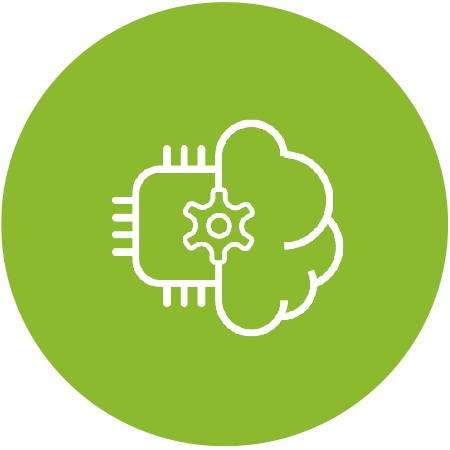Robotic Process Automation (RPA)
Everyone makes mistakes. Mistakes are inevitable, no matter how much guidance and training you provide to your staff. However, in many cases, tasks that lead to human errors are the repetitive tasks that can be automated with robotic process automation (RPA).
In many tasks, the amount of work fluctuates over time while the amount of staff remains constant. It’s hard to keep lead-times down and orchestrate a team effort when there are a lot of different data sources and/or input comes from multiple members of a team – often in stepwise deliveries. Additionally, work can quickly become complex when you have strict business rules to follow with manual processes.
Introducing robotic process automation
Today there are many tasks that can and often should be replaced with automation. However, it is impossible to replace a human with a single tool. The optimal solutions use notions from different fields such as artificial intelligence (AI), machine learning (ML), workflow engines, and robotic process automation (RPA) to provide a labour and cost-saving, machine-driven decision making solution.
At Dat Ductus we have extensive experience of providing cost-efficient solutions that deliver fewer errors and shorter lead-times to a process. As all workflows are unique we can help you tailor a solution to meet your organization’s specific needs.
Successful RPA implementations consist of three parts:

RPA Platform
Intuitive & scalable environment for robots
An RPA platform that is intuitive to use and offers a way to reuse scalable components. It is important that already implemented processes are easy to modify.

Analytics
Measure impact
to improve process
Analytics capabilities to be able to measure how well an automation is performing and allowing a structured way of fine-tuning.

Artificial Intelligence
Transform data into value
Artificial intelligence through machine learning to be able extract information from emails, PDF documents, and so on.
We can help you in several ways:
Advisory services
Identifying processes suitable for automation

We believe an automation journey should be incremental. Our first step is to take an inventory of processes where automation would add business value. Good candidates are those where human capabilities are augmented or where humans do not need to be part of the activity.
If you require any further information, feel free to contact us
Implementation services, Deployment services
Implementing automation solutions

We can help you translate your current and future needs into an automation solution. For many common tasks, such as handling emails or spreadsheets, standard components can be implemented at a low cost. When existing RPA tools are not specific enough, we can help you develop the solution you need.
We believe solutions shall be measurable so that it is possible to see the actual business value, monitor for operational issues, and finding ways to make the process even better.
If you require any further information, feel free to contact us
Implementation services, Deployment services
Leveraging cloud services for scalable automation solutions

By utilizing cloud technology, your organization can make sure all system components are cost-efficient, and always there when you need them. We can help you transition existing automation solutions to the cloud, or develop a cloud-first solution from the ground up. Often, using cloud opens up for faster prototyping and iterative implementation. We can use your existing cloud environment or help you set one up.
If you require any further information, feel free to contact us
Customer use cases

Spreadsheet automation
In many workflows, users frequently transfer data between applications and each transfer takes valuable time and adds the risk of making an error. Excel has established itself as a standard tool for storing, organizing, analyzing, and visualizing data. We used automation, to reduce a client’s risk of errors while transcribing to and from spreadsheets. Additionally, machines are used to search through vast data sources and are configured to identify inconsistencies.

Document processing
Handling invoices and other forms can be both tedious and time-consuming. One of our clients uses Optical character recognition (OCR) to make PDFs, images, and scanned documents accessible by machines. Robots are instructed to extract the relevant information from a document, structure it, and enter the information in the necessary systems. Staff can now focus on more meaningful tasks while the robots work tirelessly on the repetitive work.

Quality assurance
Using modern services, many tasks including visual inspection are automated. For instance, RPA is used by one of our clients to make sure product labels and printed products contain the right information.

Max Block
Phone: +46 (706) 88 77 07
max.block(at)ductus.se
